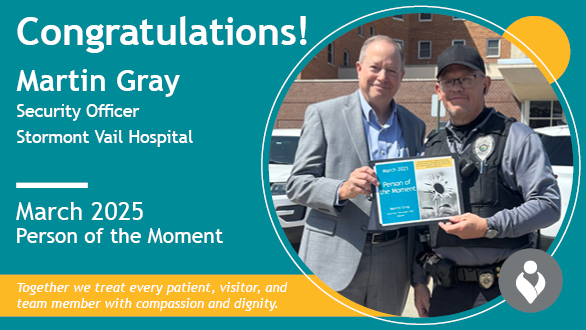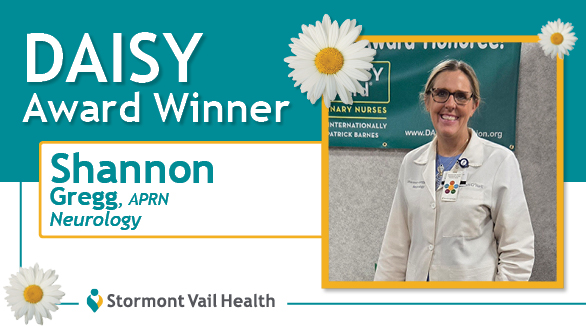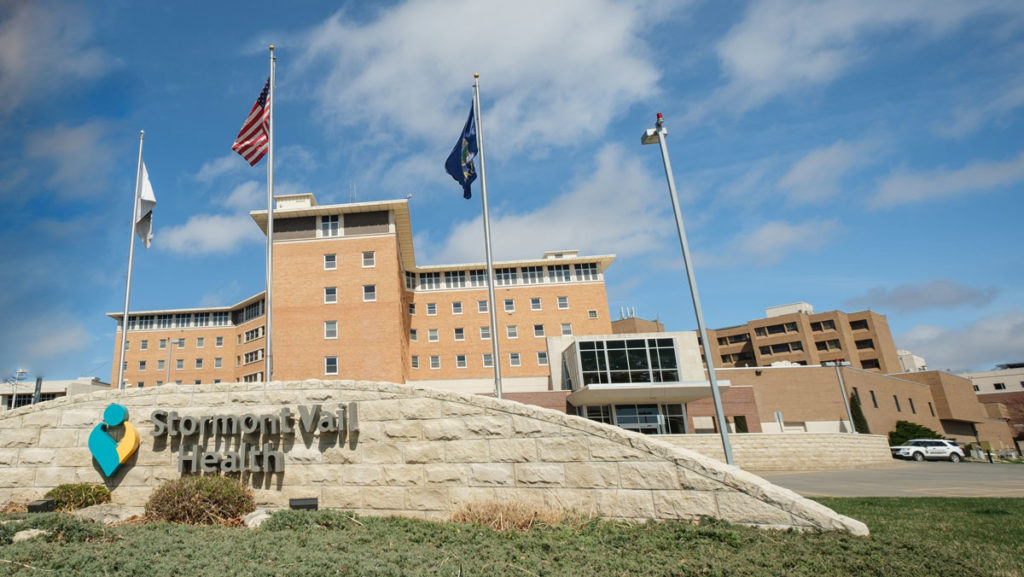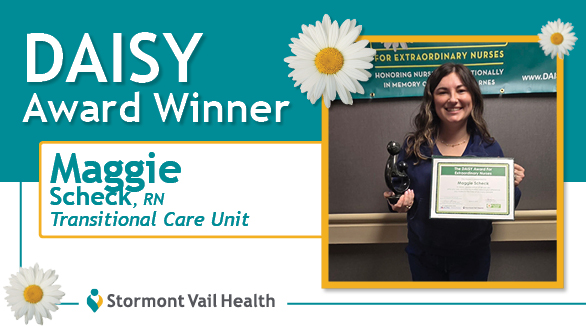Newsworthy
What Are Restorative Circles?
Restorative Circles are a type of restorative practice that addresses conflicts or problems with interactions that promote healing instead of blame or punishment. Restorative Circles offer a way for team members to come together and discuss the challenges their department or the organization should improve.
By talking about these issues together, everyone can come up with solutions for how to address them. The goal is to create a safe and open space for mutual understanding, empathy, and communication.
“Very few things can’t be healed by deep listening, and promoting empathy and understanding,” said Kate Burns, Organizational Development Consultant.
Stormont Vail Health, which values the importance of human connection, implemented the Restorative Circles program in the spring of 2022 following the COVID-19 pandemic.
“In light of the pandemic, some of our relationships across the organization were fractured. Our hope in bringing restorative circles was to help heal some of those relationships by giving our team members intentional time away from their work-whether patient care or otherwise-to connect with one another.”
Stormont Vail has held 90 circles, 42 facilitated by Kate, each lasting between 60 and 90 minutes. As one of the organization’s newest programs, we still collect data on the results. But according to Kate, preliminary results show that teams feel a stronger sense of community after they experience a circle than they did before.
Restorative Circles Promote Healthy Communication
A restorative circle is a space where people can come together and talk about a conflict or problem. Restorative circles work to resolve conflicts through dialogue, which helps people learn from each other and understand each other’s perspectives. This is helpful for both sides of the conflict because it helps them understand why they feel the way they do about what happened.
Participants sit in chairs of equal height arranged in a circle and free of barriers like tables or desks between them. The facilitator places a list of core values, which include authenticity, fun, and respectful listening, and a centerpiece representing the heart of the circle, in the middle. It serves as a reminder to speak and listen from the heart and a source of comfort for participants to rest their gaze as they speak.
The facilitator opens the circle by welcoming participants, expressing gratitude for attending and sharing the rich history of restorative practices and their indigenous roots. Then, they read a quote or poem aloud to set the session’s tone.
Following these introductions, the facilitator begins the first of several rounds of increasingly vulnerable prompt questions. As individuals speak, they pass a talking piece from person to person. The talking piece acts as an equalizer, meaning everyone has an equal opportunity to speak and be heard.
It’s important to note that nobody is obligated to speak. The first prompt question aims to build trust by asking people for an honest evaluation of how they are feeling about sitting in the circle. The facilitator is the first to respond.
“I’m nervous because it’s challenging to speak in front of people, and the circle process is incredibly close to my heart. But I share my own vulnerability in every single circle I sit or facilitate.”
Others follow suit. At first, many express anxiety sharing their answers in the Restorative Circle format. But after several rounds of questions, nervousness often eases. The last prompt asks participants for a one-word description of their feelings upon completing the first circle process. Typical responses include, validated, connected, heard, relieved, grateful, and understood.
What is Facilitative Dialogue?
In a facilitative dialogue, one person speaks at a time and listens to others speak before responding with their own thoughts about what was said. This format gives everyone in the group a chance to share their perspective on a specific event without feeling rushed or interrupted by others who might want to speak next (which can happen during other types of discussions).
Facilitative dialogue is a method of communication that allows people to share their thoughts, feelings, and ideas in a calm and respectful way. It helps people feel safe when they talk about sensitive topics because there’s no blaming or shaming allowed during this process — just listening and understanding from others involved in the dialogue.
Facilitated dialogue is an effective way for organizations like Stormont Vail to resolve current conflicts and avoid future ones. It is particularly beneficial for situations that may call for a combination of radical candor, skills development, and negotiation.
From “Woo-Woo” to “Woo-Hoo”
In March 2022, Stormont Vail’s Organizational Development Team hired an outside consultant to train the first cohort of circle facilitators, which consisted of about 20 team members from around the organization. The first official circle was facilitated on May 12, 2022.
Kate admits that the initial reception was lukewarm, with reluctance from many. “But there were also leaders and team members alike who dove in head first and said ‘Let’s do this!’”
She acknowledges how difficult it can be for people to open up, especially those who aren’t used to receiving emotional support, or even laughing at work. Gradually, though, trust in the process has grown, and people are building deeper connections and bonds at work than they ever have had before.
“Go in with an open mind,” Kate recommended. “As mentioned, many people are reluctant to try this approach at first — I get it! It can feel a little weird and ‘woo-woo’ at first. But the feeling of connection at the end is unparalleled to anything I’ve experienced before in the workplace.”
Leaders or team members can request circles for conflict resolution purposes. However, Kate also recommends them for team building.
“We have also done a circle for community members, and are looking to hold circles for people across clinics, departments, and levels of leadership to start making connections even stronger!”
Restorative Circles and similar practices are important tools for resolving conflicts in the workplace. In a time when employers face intense scrutiny for worker treatment, Restorative Circles can go a long way to help ease pain points between employers and team members, leading to higher morale, productivity, and well-being.
Restorative Circles Build Camaraderie and Community
‘We Together’ are committed to the wellbeing of our team members and believe Restorative Circles are a powerful tool to help foster stronger connections and bonds amongst our teams.
Thanks to the implementation of Restorative Circles within Stormont Vail Health, team members are reconnecting with, and learning about, one another. Through this practice, we not only rebuild a sense of community, but also resolve conflict.
Restorative Circles program is just one of several resources available to Stormont Vail team members. Other programs include:
- Wellpower
- Spiritual Care
- Therapy dogs
- Zen/Serenity Rooms
- Care for the Care Giver
- Compassionate Ear Warmline
- Stormont Vail Health Employee Assistance Program
- Stormont Vail Behavioral Health Center Professional Support Assistance Line
- HealthWell Foundation COVID-19 Frontline Health Care Workers Behavioral Health Support
To request a Restorative Circle, or to ask any questions about restorative practices, contact the Organizational Development Team online.
Sources:
- Workplace Restorative Practices. (2021, July 12). Pollackpeacebuilding.com. https://pollackpeacebuilding.com/restorative-practices-for-the-workplace/




